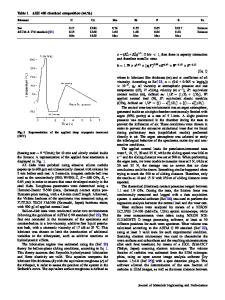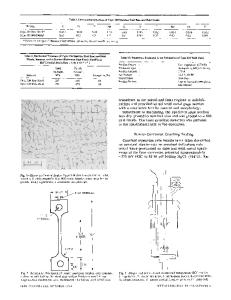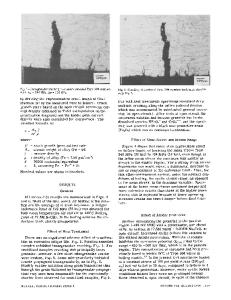Studies on the influence of metallurgical variables on the stress corrosion behavior of aisi 304 stainless steel in sodi
- PDF / 4,512,553 Bytes
- 13 Pages / 597.28 x 777.28 pts Page_size
- 50 Downloads / 327 Views
I.
INTRODUCTION
AUSTENITIC stainless steels such as AISI types 304 and 316 are candidate materials for the structural components experiencing temperatures in the range of 673 to 823 K in a 500 MWe prototype fast breeder reactor (PFBR), currently under design at the Indira Gandhi Centre for Atomic Research, Kalpakkam. In general, austenitic stainless steels, due to their good mechanical properties, fabricability, weldability, corrosion resistance, and compatibility with liquid sodium, have been the universal choice for nuclear reactor applications. In addition to the properties mentioned previously, the steels chosen for PFBR are required to resist stress corrosion cracking (SCC) in the tropical coastal environment of Kalpakkam during fabrication, storage, precommissioning, and shutdown periods. Extensive investigations that have been carded out to determine the influence of metallurgical and other variables on the stress corrosion behavior of austenitic stainless steels have shown that sensitization which might occur during welding or at elevated temperature service can cause SCC even at room temperature.t1.2] One solution to the problem is reducing the carbon level and increasing the nitrogen content (i.e., using type 316LN stainless steel) to maintain the strength levels achieved with high carbon contents. In spite of the large amount of data published on the SCC of austenitic steels, very little systematic work on nuclear grade steels with nitrogen additions has been carried out in aqueous solutions at temperatures ranging from am-
H.S. KHATAK, Head, Stress Corrosion and Liquid Metal Corrosion Section, Metallurgy Division, J.B. GNANAMOORTHY, Head, Metallurgy Division, and P. RODRIGUEZ, Director, are with the Indira Gandhi Centre for Atomic Research, Kalpakkam-603 102, Tamil Nadu, India. Manuscript submitted September 17, 1993. METALLURGICAL AND MATERIALS TRANSACTIONS A
bient to 423 K. Also, the use of the fracture mechanics approach has been limited to magnesium chloride solution, [3,4]while sodium chloride solution better represents the environment often encountered at such low temperatures. The only work reported on the SCC of such steels in NaC1 solution using the fracture mechanics approach is that of Speidel.tS] The fracture mechanics approach is useful in obtaining quantitative data on threshold stress levels and crack growth rates. Cold working is the final manufacturing operation in many applications involving austenitic steels. Many studies have been carried out on the influence of cold work on SCC using smooth samples, t6,7] and these have been reviewed by Hanninen.tSI Only limited data are available on the influence of cold work on crack growth behavior.t3.s] Also, there is little information on the influence of sensitization on components with prior cold work, a situation frequently encountered in service. Thus, it becomes essential to generate stress corrosion crack growth data in the case of special grade steels proposed to be used in future fast breeder reactors in India. In this article, crack
Data Loading...











